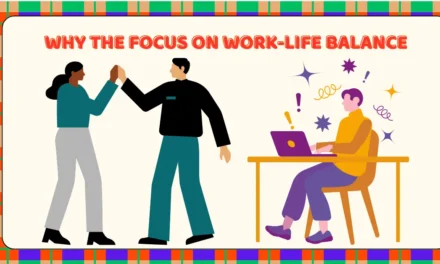Unlock the power of effective communication! Discover the top 10 communication skills to enhance your personal and professional lives. Improve relationships, boost career success, and connect on a deeper level.
Contents
- 1 How Communication Skills Change Your Career
- 2 Communication Skills for Your Life and Career Success
- 2.1 1. Active Listening: Show You Care
- 2.2 2. Clear and Concise Speaking: Less is More
- 2.3 3. Empathy: Connect on a Deeper Level
- 2.4 4. Non-Verbal Communication: More Than Words
- 2.5 5. Feedback: The Art of Giving and Receiving
- 2.6 6. Assertiveness: Speak Up with Confidence
- 2.7 7. Emotional Intelligence: Manage Your Emotions
- 2.8 8. Adaptability: Flexibility in Communication
- 2.9 9. Storytelling: Make Your Message Memorable
- 2.10 10. Questioning: Encourage Dialogue
- 3 Conclusion
- 4 FAQs
- 4.0.1 Q. What role will your communication skills play in your career success?
- 4.0.2 Q. How can good communication skills help you succeed in your personal life?
- 4.0.3 Q. What are the top ten communication skills?
- 4.0.4 Q. What are five good communication skills?
- 4.0.5 Q. What are seven good communication skills?
- 4.0.6 Q. What are the ten aspects of effective communication?
How Communication Skills Change Your Career
Do you want to boost your career and improve your relationships? It all starts with one vital tool: communication. Whether you’re a professional aiming for a promotion, a student preparing for job interviews, or an individual seeking to enhance your connections, mastering these skills can make a significant difference. Ready to supercharge your communication game?
Communication skills are not just tools but the transformative force behind successful interactions in your personal and professional lives. They have the power to revolutionize your career, your relationships, and your life. They can help you secure that dream job, navigate complex social situations, and forge deeper connections with those around you. This article will delve into the top 10 communication skills that will empower you to chart your path to success. So, let’s embark on this journey and revolutionize how you interact with the world!
What Are Communication Skills?
Communication skills encompass many abilities that allow you to convey information effectively. They include verbal, non-verbal, and written forms of communication, as well as listening and social skills. Verbal communication is about using words to express your thoughts and ideas. Non-verbal communication involves using body language, facial expressions, and articulation to convey feelings and emotions. Written communication is about using written words to share information.
Listening is about listening to what others are saying and understanding their message. Interpersonal skills are about how you interact with others. Whether speaking to a crowd, writing an email, or simply chatting with a friend, mastering these skills can significantly enhance your interactions and outcomes. Communication skills are the tools we use to express ourselves and understand others in various situations.
The Importance of Effective Communication
Why are communication skills so crucial? Simply put, they can make or break your success in life and work. In personal relationships, transparent and empathetic communication fosters trust and understanding. On the other hand, a lack of effective communication can lead to misunderstandings, conflicts, and even the breakdown of relationships. In the workplace, conveying your ideas effectively can lead to career advancement, better teamwork, and a more harmonious work environment. Conversely, poor communication can result in missed opportunities, workplace tension, and job loss.
Communication Skills for Your Life and Career Success
1. Active Listening: Show You Care
Listening isn’t just about hearing words but also understanding their message. Active listening involves fully engaging with the speaker mentally and physically to grasp the whole meaning of their communication. For instance, imagine you’re in a team meeting, and your colleague is presenting a new project. Active listening in this scenario would mean not just hearing the words but also understanding the context, the goals, and the challenges of the project. In other words, pay attention to what is said and what emotions and intentions are expressed.
How to Practice Active Listening:
- Make eye contact. This demonstrates that you are focused on the speaker and interested in what they say.
- Nod and Use Affirmative Gestures: Simple gestures like nodding or saying “I see” or “I understand” show that you follow along and encourage the speaker to continue.
- Avoid Interrupting: Let the speaker complete their thoughts before responding. Interrupting can be frustrating and can make the speaker feel disrespected.
- Summarize and Reflect: Paraphrase the speaker’s words to confirm your understanding. For example, “So, what you’re saying is…” This shows that you are listening and clarifying any misunderstandings.
- Ask Open-Ended Questions: Encourage the speaker to embellish their thoughts and feelings. Questions like “How did that make you feel?” or “Can you tell me more about that?” invite deeper conversation.
- Please pay Attention to Nonverbal Cues. Notice the speaker’s body movements, facial expressions, and articulation to fully understand their message.
Benefits of Active Listening:
- Active listening is not just a skill but a powerful tool that fosters trust and respect in relationships. By actively listening, you make people feel valued and understood, strengthening your bonds with them. This skill is a game-changer in personal and professional interactions, enhancing your understanding and problem-solving abilities.
- Improves Understanding: By giving the speaker your full attention, you can better understand their point of view and avoid misunderstandings.
- Promotes Problem-Solving: Active listening can lead to more effective solutions as you fully understand the issues.
Actionable Tip:
Next time you’re conversing, put your phone away and give your full attention to the speaker. Repeat crucial points or summarize their message to show you’ve understood. For example, “It sounds like you’re saying…” This will demonstrate your engagement with and respect for their perspective.
2. Clear and Concise Speaking: Less is More
Clarity is critical to effective communication. Speaking clearly and concisely ensures your message is easily understood, which is crucial in personal and professional settings. Eliminating unnecessary jargon and getting straight to the point reduces the risk of miscommunication and makes your interactions more efficient.
How to Practice Clear and Concise Speaking:
- Know Your Main Points: Before speaking, identify the key points you want to convey. This will help you stay focused and organized.
- Use Simple Language: Avoid using complex words or technical jargon unless necessary. Simple language is more accessible and less likely to be misunderstood.
- Be Direct. Get to the point quickly and avoid rambling. This will save time and keep the listener’s interest.
- Structure Your Message: Organize your thoughts logically. Begin with a brief introduction, follow with the main points, and conclude with a summary.
- Use examples and analogies. These can help clarify your message and make it more relatable.
- Pause for Emphasis: Use pauses to highlight important points and give the listener time to absorb your words.
Benefits of Clear and Concise Speaking:
- Improves Understanding: Clear communication ensures that your message is understood as intended.
- Saves Time: Being concise keeps conversations and meetings focused and efficient.
- Reduces Misunderstandings: Clear messaging minimizes the chances of confusion and errors.
- Clear and concise speaking is not just a communication style; it’s a hallmark of professionalism and confidence. Communicating enhances your professional image, presenting yourself as competent. This skill is a key to success in your career, as it demonstrates your ability to convey complex ideas effectively.
Actionable Tip:
Before a meeting or presentation, jot down the main points you want to convey. Practice straightforwardly delivering them. For example, if you’re preparing for a team meeting, outline your agenda and rehearse summarizing each point in a few sentences. Your communication will be more effective if you do this.
By mastering active listening and clear speaking, you’ll improve your communication skills, build stronger relationships, and achieve tremendous success in your personal and professional lives.
3. Empathy: Connect on a Deeper Level
Empathy involves understanding and sharing the expressions of others. It means putting yourself in someone else’s shoes to comprehend their perspective and emotions. This deeper connection helps you respond more thoughtfully and can significantly increase your personal and professional relationships.
How to Practice Empathy:
- Listen Actively: Give your full attention to the speaker, showing you care about what they say. Avoid interrupting, and let them express themselves fully.
- Validate Feelings: Acknowledge the other person’s emotions. You can validate their feelings with phrases such as “I understand why you feel that way” or “That sounds challenging.”
- Ask Open-Ended Questions: Push the speaker to share their feelings and experiences. Questions like “Can you tell me more about that?” or “How did that make you feel?” show interest and care.
- Share Your Feelings: Sometimes, sharing a similar experience or feeling can help the other person feel understood and less alone.
- Be Non-Judgmental: Approach each conversation without preconceived notions or judgments. Be open to understanding the other person’s viewpoint.
Benefits of Empathy:
- Builds Trust and Stronger Relationships: When people feel understood, they are more likely to trust you and form deeper connections.
- Enhances Teamwork: Empathy fosters a supportive environment in a professional setting, improving collaboration and teamwork.
- Improves Conflict Resolution: Understanding the emotions behind conflicts can lead to more effective and compassionate resolutions.
Actionable Tip:
When someone shares a problem, resist the urge to offer solutions immediately. Instead, acknowledge their feelings by saying, “That sounds tough. How are you feeling about it?” Follow up with, “How can I support you?” This approach shows that you care and are there for them emotionally.
4. Non-Verbal Communication: More Than Words
Gestures, facial expressions, and articulation are examples of nonverbal communication. These cues significantly influence how people understand your message because they frequently speak louder than words. Understanding and utilizing nonverbal cues well can improve communication and guarantee that your message is received and understood.
How to Use Non-Verbal Communication Effectively:
- Maintain Eye Contact. Eye contact shows that you are engaged and paying attention. It can also convey confidence and sincerity.
- Use Positive Body language. Open gestures, such as uncrossed arms and leaning slightly forward, show you are open and interested. Avoiding closed-off postures, like crossing your arms, can prevent misinterpretation.
- Pay attention to facial expressions. Your gestures should match your words. A smile can reinforce a friendly message, while a severe expression can underscore the importance of your words.
- Be Aware of your tone of voice. Your voice conveys emotions such as excitement, concern, or anger. Be sure your tone matches the message you want to deliver.
- Observe Others’ Non-Verbal Cues: Awareness of others’ body language can give you additional insight into their feelings and reactions.
Benefits of Non-Verbal Communication:
- Enhances Understanding: Non-verbal cues can clarify and reinforce your verbal message.
- Builds Rapport and Trust: Positive body language helps build rapport and trust, making your interactions more effective.
- Improved Persuasiveness: When your body language aligns with your words, you appear more confident and persuasive.
Actionable Tip:
Pay attention to your posture and gestures during conversations. Manage eye contact and use open body language to appear more approachable and engaged. For instance, lean slightly during a meeting, nod in agreement, and smile to show you’re engaged and supportive. Aligning your nonverbal cues with your verbal messages can enhance the effectiveness of your communication.
By mastering empathy and non-verbal communication, you can connect more deeply with others, cherishing trust and understanding in all your interactions. These skills are essential to successful and meaningful communication in personal or professional relationships.
5. Feedback: The Art of Giving and Receiving
Constructive feedback is vital for growth. It aids individuals in understanding their strengths and areas for improvement, fostering personal and professional development. Learning to give specific, actionable, and kind feedback can significantly impact the recipient. Equally important is the capability to receive input without becoming defensive, as this openness can propel growth and learning.
How to Give Constructive Feedback:
- Be Specific: Focus on particular behaviors or actions rather than making general statements. This clarity helps the recipient understand precisely what needs to be improved.
- Make It Actionable: Provide suggestions on how to improve. Steps are clearly outlined for the recipient to follow.
- Be Kind and Respectful: Deliver feedback in a considerate and supportive manner. Harsh criticism can be demotivating, while constructive feedback encourages improvement.
- Timing Matters: Give feedback promptly while the context is still fresh. However, ensure the timing is appropriate and the recipient is receptive.
- Follow-up: After giving feedback, check in later to see how the person is progressing and offer further assistance if needed.
How to Receive Feedback:
- Listen Actively: Undertake what the person is saying without interrupting. Try to understand their perspective fully.
- Stay Open-Minded: Accept feedback, even if it’s critical. View it as an opportunity to learn and grow.
- Ask for Clarification: If something is ambiguous, ask questions to get a better understanding.
- Reflect and Act: Consider the feedback carefully and develop a plan to address the areas for improvement.
Actionable Tip:
When giving feedback, use the “sandwich method”: start with a positive comment, address the area for improvement, and finish with another positive comment. For example, “I appreciate your attention to detail in your reports. One thing that could improve is the timeliness of submissions. Overall, your work is thorough and highly valuable.”
6. Assertiveness: Speak Up with Confidence
Assertiveness is about convincing others of your thoughts, feelings, and needs directly and respectfully. This skill is crucial for setting boundaries, ensuring your voice is heard, and maintaining healthy relationships without appearing aggressive or passive.
How to Practice Assertiveness:
- Use “I” Statements: Express your demands and feelings using “I” statements. This approach focuses on your perspective and reduces the chance of sounding accusatory. For example, “I feel frustrated when meetings start late because it disrupts my schedule. I need us to start on time.”
- Be Direct and Honest: Clearly articulate your thoughts and desires without beating around the bush. Honesty fosters transparency and trust.
- Despite being direct, always maintain respect for others. It helps maintain positive relationships.
- Set Boundaries: Clearly express what is acceptable and what is not. Boundaries help protect your time, energy, and emotional well-being.
- Practice Saying No: Politely decline requests that overextend you. Saying no is a vital part of assertiveness.
Benefits of Assertiveness:
- Builds Self-Confidence: Being assertive helps you feel more in control and respected.
- Enhances Relationships: Clear communication of needs and boundaries leads to healthier and more balanced relationships.
- Reduces Stress: Assertiveness can reduce stress by preventing misunderstandings and conflicts.
Actionable Tip:
Practice using “I” statements to express your needs. For example, “I feel… when… because… I need…” Such a formula helps you communicate assertively without sounding confrontational.
7. Emotional Intelligence: Manage Your Emotions
Emotional intelligence (EQ) is the capability to perceive, understand, manage emotions, and empathize with others. High EQ helps one navigate social complexities, lead more effectively, and build stronger relationships.
How to Enhance Emotional Intelligence
- Self-Awareness: Reflect on your emotions and how they affect your thoughts and behavior. Awareness of your emotional triggers and reactions is the first step towards managing them.
- Self-regulation: Learn to control your impulses and react to situations calmly and measuredly. Techniques like deep breathing, mindfulness, and pausing before responding can help.
- Motivation: Stay motivated to achieve your goals despite setbacks. Self-motivation involves setting clear goals and maintaining a positive attitude.
- Empathy: Apprehend and share the feelings of others. Concentrate on non-verbal cues and actively listen.
- Social Skills: Develop skills to manage relationships effectively. Teamwork, clear communication, and conflict resolution are all included here.
Benefits of Emotional Intelligence:
- Improved Relationships: High EQ leads to better understanding and stronger connections.
- Effective Leadership: Leaders with high EQ can inspire and manage their teams more effectively.
- Enhanced Decision-Making: Figuring out your emotions can lead to better decision-making and problem-solving.
Actionable Tip:
Prove your emotional responses to different situations. Know the triggers and develop strategies to manage your emotions positively. For example, if you notice you get anxious before presentations, practice deep breathing or visualization techniques to calm yourself.
By mastering feedback, assertiveness, and emotional intelligence, you can improve your communication skills, build stronger relationships, and succeed tremendously in all life phases.
8. Adaptability: Flexibility in Communication
Adaptability means adjusting your style and approach to suit different audiences and contexts. Whether you’re presenting to a group of executives, chatting with a friend, or addressing a diverse team, the ability to shift your communication style ensures your message is compelling and well-received.
How to Practice Adaptability:
- Understand Your Audience: Before communicating, consider who your audience is and what their expectations might be. Tailor your language, tone, and level of formality accordingly.
- Be Observant: Pay attention to how others in the setting are communicating. Mimic their style to build rapport and ensure your message aligns with the group’s norms.
- Stay Open-Minded: Be willing to change your approach if your initial style isn’t resonating. Flexibility is critical to effective communication.
- Use Varied Communication Channels: Adapt to your audience’s preferred communication methods, such as email, face-to-face meetings, video calls, or instant messaging.
- Seek Feedback: Regularly demand feedback on your communication style and be willing to make adjustments based on the input you receive.
Benefits of Adaptability:
- Improved Engagement: Tailoring your communication style to your audience keeps them engaged and interested.
- Better Understanding: Adapting your approach can help ensure different groups understand your message clearly.
- Enhanced Relationships: Flexibility in communication helps build stronger, more effective relationships with diverse individuals.
Actionable Tip:
Observe and mimic the communication style of others to build rapport. Pay attention to their formality, tone, and language. For example, adopt a more professional tone and vocabulary in a formal business meeting, and relax your language and tone to match the environment in a casual setting.
9. Storytelling: Make Your Message Memorable
Storytelling is a solid way to communicate complex ideas in an engaging and relatable manner. Good storytelling can capture attention, evoke emotions, and make your message stick, making it a valuable communication skill.
How to Practice Storytelling:
- Incorporate Personal Anecdotes: Use your own experiences to illustrate points. Personal stories make your message more relatable and authentic.
- Structure Your Story: Follow a clear structure with a beginning, middle, and end. Start with a hook to grab attention, build the narrative, and conclude with a memorable point.
- Use Vivid Details: Engage your audience’s senses by including vivid descriptions and details that bring your story to life.
- Highlight Key Points: Make sure your story reinforces the main message you want to convey. Keep the focus on your key points to ensure your audience takes away the intended lesson.
- Practice Delivery: Rehearse your stories to ensure smooth delivery. Focus on your tone, pace, and body language to enhance the impact of your storytelling.
Benefits of Storytelling:
- Captures Attention: Stories are naturally engaging and can keep your audience interested.
- Evokes Emotions: Well-told stories can evoke emotions, making your message more impactful and memorable.
- Simplifies Complex Ideas: Stories can simplify complex concepts, making them easier to understand and remember.
Actionable Tip:
Incorporate personal anecdotes or relevant stories into your conversations and presentations. For example, if you’re giving a presentation on leadership, share a story about a time you faced a leadership challenge and what you learned from it. Practice crafting a narrative that highlights your key points and engages your audience.
10. Questioning: Encourage Dialogue
Asking the right questions can stimulate conversation, clarify understanding, and encourage others to share their thoughts. Effective questioning leads to deeper insights and more meaningful exchanges, making it an essential communication skill.
How to Practice Effective Questioning:
- Ask Open-Ended Questions: These questions need more than a yes or no answer and encourage detailed responses. For example, “What are your thoughts on this project?” instead of “Do you like this project?”
- Use Probing Questions: Follow up on initial answers to gain deeper insights. For example, “Can you explain why you feel that way?”
- Clarify and Confirm: Ensure you understand the response by asking clarifying questions. For example, “When you say X, do you mean…?”
- Encourage Reflection: Ask questions that prompt the other person to reflect on their experiences or thoughts. For example, “How do you think we can improve this process?”
- Be patient and listen. Give the person time to think and respond fully. Listen actively and avoid interrupting.
Benefits of Effective Questioning:
- Stimulates Conversation: Open-ended and probing questions can lead to more engaging and productive discussions.
- Enhances Understanding: Questions help clarify information and ensure you fully understand the other person’s perspective.
- Builds Relationships: Showing genuine interest through questioning fosters trust and strengthens relationships.
Actionable Tip:
Use open-ended questions to invite more detailed responses. For example, instead of asking, “Did you like the presentation?” ask, “What did you think of the presentation?” This approach encourages a more in-depth discussion and provides valuable insights.
By mastering adaptability, storytelling, and questioning, you can increase your communication skills and make your interactions more effective and meaningful in personal and professional settings.
Conclusion
Communication is more than just exchanging information; it’s about connecting and building relationships. By honing these ten essential skills, you can enhance your personal and professional life. Start practicing today, and watch your interactions transform into meaningful connections that drive success and fulfillment.
Remember, effective communication isn’t just a skill—it’s a bridge to better relationships and more significant achievements. So, which communication skill will you focus on improving first? Let’s get talking!
FAQs
Q. What role will your communication skills play in your career success?
Practical communication skills are crucial for career success. They enable you to convey ideas, collaborate with colleagues, and build strong professional relationships. Good communication can lead to better teamwork, increased productivity, and more opportunities for advancement. Whether negotiating a deal, presenting to clients, or managing a team, communicating effectively can set you apart from others and propel your career forward.
Q. How can good communication skills help you succeed in your personal life?
Good communication skills are essential for maintaining healthy relationships in your personal life. They help you express your feelings, needs, and thoughts clearly, preventing misunderstandings and conflicts. Effective communication fosters deeper connections, empathy, and trust with family and friends. It also enhances problem-solving abilities and ensures that you can navigate difficult conversations with ease and respect.
Q. What are the top ten communication skills?
- Active Listening: Fully concentrate, understand, respond, and remember what the other person is saying.
- Clear and Concise Speaking: Express ideas succinctly and avoid unnecessary jargon.
- Empathy: Perceive and share the feelings of others.
- Non-Verbal Communication: Use body language, facial expressions, and tone to reinforce your message.
- Feedback: Provide and receive constructive criticism effectively.
- Assertiveness: Confidently express your thoughts and needs while respecting others.
- Emotional intelligence: perceive and manage your own emotions and empathize with others.
- Adaptability: Manage your communication style to suit different audiences and contexts.
- Storytelling: Use anecdotes to make your message more engaging and memorable.
- Questioning: Ask open-ended questions to boost Dialogue and deeper understanding.
Q. What are five good communication skills?
- Active Listening: Engage with the speaker and show that you are paying attention.
- Clear Speaking: Straightforwardly convey your message.
- Empathy: Show understanding and attention to others’ feelings.
- Non-verbal communication: Use facial expressions and body language to support your words.
- Feedback: Give and accept constructive criticism to foster growth.
Q. What are seven good communication skills?
- Active Listening: Show honest interest in what others are saying.
- Clear Speaking: Articulate your thoughts clearly and concisely.
- Empathy: Connect with others on an emotional level.
- Non-Verbal Communication: Enhance your message with appropriate body language.
- Feedback: Provide and receive feedback constructively.
- Assertiveness: Confidently communicate your needs and opinions.
- Adaptability: adapt your communication style to different situations and audiences.
Q. What are the ten aspects of effective communication?
- Active Listening: Pay full attention and respond appropriately.
- Clarity: Be clear and concise in your messaging.
- Empathy: Understand and relate to others’ emotions.
- Non-verbal cues: Use body facial expressions and language to enhance your message.
- Feedback: Engage in a constructive exchange of feedback.
- Assertiveness: Communicate your needs and boundaries confidently.
- Emotional Regulation: Manage your emotions to communicate more effectively.
- Adaptability: Adjust your style to fit the audience and context.
- Questioning: Ask thoughtful questions to deepen understanding.
- Respect: Show consideration and respect for the perspectives and feelings of others.
Read more articles on Health and Wellness.
You might like to read:
The Connection Between Spirituality and Social Support for Wellness










